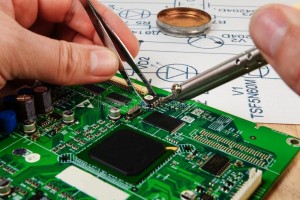Understanding the Manufacturing Process of Electronics Products
In today’s digital era, electronics are essential in our daily lives, driving smartphones, laptops, medical devices, and automotive systems. Behind each device is a detailed manufacturing process with careful planning, advanced tech, and precise attention. In this blog let’s explore the captivating realm of electronics production, revealing the journey of creating your beloved gadgets.
Design Phase: The journey begins with the design phase, where engineers and designers, team up to plan the product. They outline its functions, features, and appearance. Cutting-edge CAD software is employed to craft precise schematics and 3D models, ensuring perfect component integration.
Prototyping: After finalizing the design, engineers make test versions called prototypes to check for problems or ways to make it better before mass-producing it. Fast prototyping methods like 3D printing help improve designs quickly, saving time and resources.
Component Sourcing: Electronics products consist of numerous components, ranging from microchips and capacitors to connectors and displays. Sourcing high-quality components from trusted suppliers is crucial to ensuring the reliability and performance of the final product. Manufacturers must carefully evaluate factors such as cost, lead times, and quality certifications when selecting suppliers.
PCB Assembly: The main part of any electronic device is the Printed Circuit Board (PCB). It connects all the components together. PCB assembly involves soldering electronic components onto the board according to the design specifications. Skilled technicians can do this by hand, or machines can do it for bigger batches.
Enclosure Manufacturing: Many electronics products require protective enclosures to house the internal components and provide a user-friendly interface. These protective enclosures can be made of plastic, metal, or other materials. Techniques like injection moulding and CNC machining are used to make protective enclosures with exact sizes and looks.
Testing and Quality Control: Ensuring electronics products meet high standards for performance, reliability, and safety is crucial in manufacturing. Various tests are conducted, including component testing, PCB testing, and final product testing. Advanced equipment like ICT and functional testing is used to detect defects.
Packaging and Shipping: After passing quality checks, products are packaged securely for shipping. Packaging plays a crucial role in protecting the products during transit and storage, as well as enhancing the brand’s image. Efficient logistics and supply chain management ensure timely delivery of products to customers worldwide.
Regulatory Compliance: Electronics manufacturers must adhere to various regulations and standards governing product safety, electromagnetic compatibility (EMC), and environmental sustainability. Compliance with standards such as UL, CE, and RoHS is essential to ensure market access and customer trust.
Electronics manufacturing requires expertise, precision, and innovation from design to testing. Manufacturers strive for high-quality products that push technological boundaries. This guide provides insights into this complex process.
Author- Moumita Ghosh










Leave a Reply